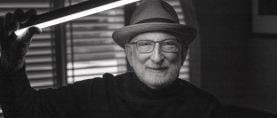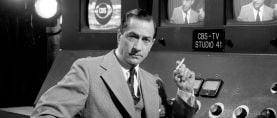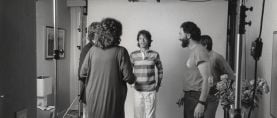
President’s Desk: The Blind Awakening
High dynamic range is among the latest and certainly one of the most game-changing technologies to impact our work as cinematographers. But is it a step forward or back?

High dynamic range, or HDR, is among the latest and certainly one of the most game-changing technologies to impact our work as cinematographers. Presented as the next best thing — with increased contrast, extended range and the ability to handle a wide gamut of colors — it’s a huge step in image presentation. But is it a step forward or back?
I’ll save you a detailed technical analysis, for which there are many articles written by knowledgeable technicians. Instead, what has been on my mind is how this technology changes the way we might shoot and finish our images — provided, of course, we’re even in a position to finish our images, which unfortunately is not always the case. Many previously released movies and television shows are being retransferred in HDR, and in many of those cases the cinematographers have not been invited to participate. Even on new projects, the cinematographer is not always invited for the coloring, whether or not it involves HDR.
HDR is prized for its extended range and ability to see incredible definition in the highlights. Those selling HDR always demonstrate the vivid crimson skies of sunset, or stark blue midday skies populated with bright, puffy clouds. They love to “blind” you with flashing lights and bright colors — often an eye-piercing red. Ironically, these are the things that we as cinematographers have usually stayed away from, preferring instead an interpretation of the visual world around us that is less saturated and not so super-dynamic.
More often, we are looking for subtlety, for mood, for desaturated colors. We tend to be interested in the dark side and shy away from the light — unless, of course, the light is what a particular project calls for. Being confronted so consistently with HDR’s bright side is akin to playing your home stereo only at full amplification. Social consequences aside, you would eventually go deaf! Could HDR similarly make you blind? A friend of mine recently watched a large-screen showing of HDR imagery that weighted its performance for a super-bright image, and yes, his eyes were hurt. After a doctor’s visit, he was ordered to a dark room for 24 hours.
In truth, HDR is not all bad if you properly control it. It has especially caught my interest in its ability to deal with the dark side of the image.
A corollary in the art world can be found in Rembrandt’s paintings — such as The Night Watch (1642), seen above — which draw your attention to the dark, where the painter’s detail is rich and varied. The black outfits worn by the paintings’ subjects display an enormous variety of densities. There are subtle shades of color, and the fabric, dark as it is, always seems to catch a subtle highlight. Additionally, the white lace collars of the era, representing the paintings’ highest brightness, appear as a muted white, with lots of fine detail.
Previously, that sort of dynamic range was not really possible to replicate in the photographic world. But now, with HDR, we are able to reach into the darkness.
When Roger Deakins, ASC, BSC graded Blade Runner 2049 for HDR, he made sure the detail in the darkness was rich and vivid, and he downplayed the brightness of the transfer. The result showed me that a cinematographically satisfying approach to HDR is possible after all. But, yes, it requires the complete involvement of the cinematographer to oversee the process.
Without that involvement, I’m afraid we will be left with a world of the blind, where the one-eyed will be king.

Kees van Oostrum
ASC President







